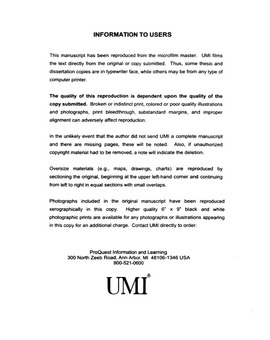| dc.contributor.advisor | West, Ann H., | en_US |
| dc.contributor.author | Xu, Qingping. | en_US |
| dc.date.accessioned | 2013-08-16T12:18:23Z | |
| dc.date.available | 2013-08-16T12:18:23Z | |
| dc.date.issued | 2001 | en_US |
| dc.identifier.uri | https://hdl.handle.net/11244/366 | |
| dc.description.abstract | Finally, through molecular modeling and structural comparisons, a general model of how YPD1 and response regulator domains might interact was proposed. It seems likely that YPD1 binds to response regulator domains through conserved hydrophobic surfaces on both the response regulator domains and YPD1. This model supports the hypothesis that molecular interactions between HPt domains and response regulators, in general, are likely to be conserved in other systems as well. | en_US |
| dc.description.abstract | The X-ray structure of YPD1 was solved at a resolution of 1.75 A by multiple isomorphous replacement with anomalous scattering. The tertiary structure of YPD1 consists of six alpha-helices and a short 310-helix, four of which form a central four-helix bundle core. The histidine residue that is phosphorylated (His64) is located on the surface of the four-helix bundle. Structure-based comparisons of YPD1 to other proteins having a similar function, such as the Escherichia coli ArcB histidine-containing phosphotransfer (HPt) domain and the P1 domain of the CheA kinase, as well as Spo0B from Bacillus subtilis, revealed that the helical bundle and several structural features around the phosphorylatable histidine residue are conserved between the prokaryotic and eukaryotic kingdoms. The conservation of YPD1 structure correlates well with observations that YPD1 can functionally substitute for other HPt domains despite limited sequence homology. These findings suggest that the four-helix bundle fold, particularly, the alphaC-alphaD helical hairpin motif with the centrally located exposed phosphorylation site, represent important conserved features of other HPt domains. | en_US |
| dc.description.abstract | In order to understand the His-Asp phosphotransfer mechanism, a series of YPD1 mutants defective in phosphotransfer ability were further characterized through the determination of their three dimensional structures. The structure of the G68Q mutant, determined by the method of molecular replacement, provided further insight into the importance of the exposed His64 with respect to YPD1 function. Based on the analysis of the G68Q structure, a conserved hydrophobic molecular surface on YPD1 was identified and postulated to be important in binding response regulator domains. | en_US |
| dc.description.abstract | YPD1 is an important protein involved in yeast cellular responses to hyperosmolarity and oxidative stress. In Saccharomyces cerevisiae , the SLN1-YPD1-SSK1 phosphorelay pathway controls the activation of a downstream mitogen-activated protein kinase upon hyperosmotic stress, whereas the SLN1-YPD1-SKN7 pathway is involved in responses to oxidative stress and cell wall biosynthesis. YPD1 is required for phosphoryl group transfer from the sensor kinase SLN1 to the response regulator proteins SSK1 or SKN7. YPD1 appears to be a versatile protein in accepting/donating phosphoryl group from/to various response regulator domains. | en_US |
| dc.description.abstract | The role of a hydrogen bond between Gln86 and the phosphorylatable His64 was also investigated. Structures of three YPD1 mutants, Q86A, Q86E and Q86L revealed that the hydrogen bond to His64 could be retained through an intervening water molecule or subtle rearrangement of side-chains. These structures, combined with results from side-directed mutagenesis studies, suggest that the hydrogen bond might be involved in stabilizing the exposed histidine. | en_US |
| dc.format.extent | xvii, 123 leaves : | en_US |
| dc.subject | Biology, Molecular. | en_US |
| dc.subject | Proteins. | en_US |
| dc.subject | Chemistry, Biochemistry. | en_US |
| dc.subject | Yeast. | en_US |
| dc.subject | Phosphotransferases. | en_US |
| dc.title | The structure and function of YPD1, a histidine-containing phosphotransfer protein from yeast. | en_US |
| dc.type | Thesis | en_US |
| dc.thesis.degree | Ph.D. | en_US |
| dc.thesis.degreeDiscipline | Department of Chemistry and Biochemistry | en_US |
| dc.note | Source: Dissertation Abstracts International, Volume: 62-09, Section: B, page: 4012. | en_US |
| dc.note | Chair: Ann H. West. | en_US |
| ou.identifier | (UMI)AAI3025982 | en_US |
| ou.group | College of Arts and Sciences::Department of Chemistry and Biochemistry | |
